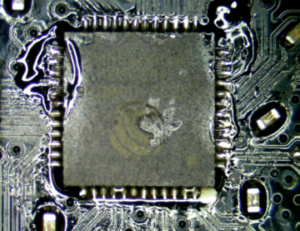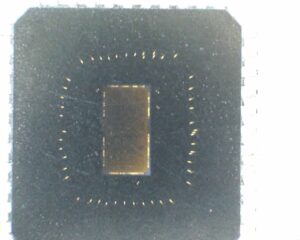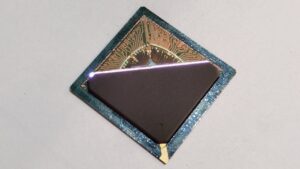Extracting Microchip MCU PIC16F1458 EEPROM code is a complex process involving advanced techniques to decode and decrypt its secured and encrypted data. This protective microcontroller (MCU) is designed to safeguard its EEPROM memory, flash memory, and embedded firmware, ensuring the binary and heximal code remains locked against unauthorized access. However, in specific scenarios such as system restoration or repair of obsolete devices, reverse engineering methods are employed to crack its security protocols and recover the necessary program and source code.

The process begins with analyzing the microprocessor’s architecture to identify vulnerabilities in its encryption or locking mechanisms. By employing targeted attacks and specialized tools, engineers can decrypt and extract the firmware and EEPROM memory. This allows for the restoration of critical software or the replication of locked programs for use in system cloning or repair.
Extracting the EEPROM code from the PIC16F1458 enables the recovery of valuable information stored within the microcomputer, especially in cases where the original source code or development files are unavailable. Restoring such data is essential for maintaining the functionality of secured systems or recreating legacy hardware.

It’s important to ensure that any attempt to extract, decode, or crack the EEPROM code of the PIC16F1458 adheres to ethical and legal standards, respecting intellectual property rights and avoiding unauthorized usage.
Extract Microchip MCU PIC16F1458 Eeprom Code can be realized through the non-invasive attack method, since the Timer1 can be configured for 16-bit reads and writes, as a result of that, first of all RTCisr (show in below picture) of application code routine will demonstrates a simple method to increment a counter at one-second intervals using an Interrupt Service Routine.
Incrementing the TMR1 register pair to overflow triggers the interrupt and calls the routine, which increments the seconds counter by one by MCU Cracking. Additional counters for minutes and hours are incremented as the previous counter overflow when Extract Microchip MCU PIC16F1458 Eeprom Code.

Since the register pair is 16 bits wide, counting up to overflow the register directly from a 32.768 kHz clock would take 2 seconds which is the shortest time length for Copy Microcontroller PIC16C711 Flash. To force the overflow at the required one-second intervals, it is necessary to preload it. The simplest method is to set the MSb of TMR1H with a BSF instruction.
Note that the TMR1L register is never preloaded or altered; doing so may introduce cumulative error over many cycles. For this method to be accurate, Timer1 must operate in Asynchronous mode and the Timer1 overflow interrupt must be enabled (PIE1<0> = 1), as shown in the routine, RTCinit for the purpose of Read MCU PIC16C717 Eeprom. The Timer1 oscillator must also be enabled and running at all times.


